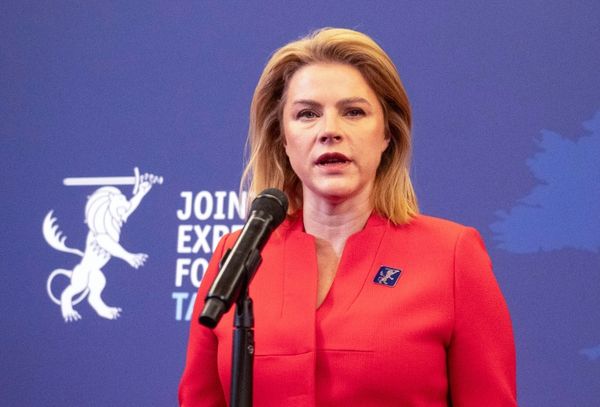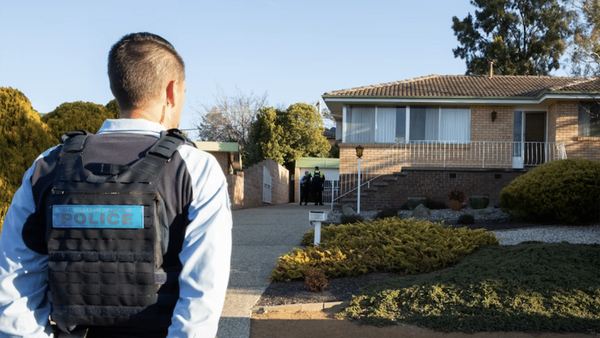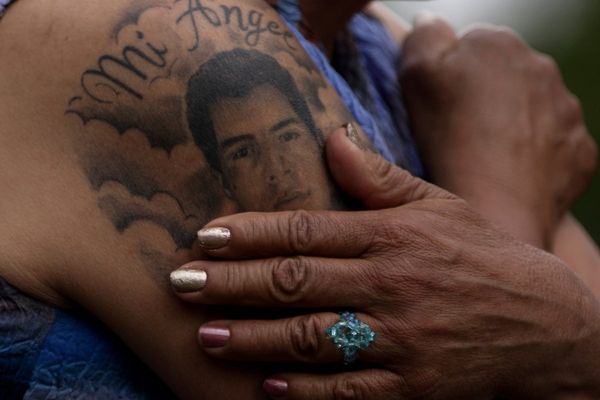
When it comes to N95 face masks, “faking it until you make it” doesn’t quite work. You may be searching for N95 respirators to protect yourself against Covid-19, especially with the spread of the more transmissible Omicron variant. The trouble is, and here’s a shocker, people or businesses may try to sell you counterfeit N95 face masks just to make money.
Now, buying a fake designer handbag or a fake real Jon Hamm human hair beard may be one thing. The consequences of using a counterfeit in such cases may not be that dire. That’s unless you run into Jon Hamm and he tells you, “dude, I never sold my beard hair.” By contrast, using a fake N95 respirator can put you at serious risk. It can give you a false sense of security and actually allow the severe acute respiratory syndrome coronavirus 2 (SARS-CoV-2) through to infect you.
Therefore, when you’re purchasing an N95 respirator, the operative phrase should be “caveat emptor,” which is Latin for “let the buyer beware.” As the following CBC News segment showed, the marketplace is filled with counterfeits and shallow fakes:
Don’t rely on what some random dude on Facebook, that advertisement, or that salesperson tells you. After all, buying a N95 respirator is not like buying underwear. It may be much easier to tell when something’s not underwear. If it’s made of concrete, consists of large metal blades, has a gigantic bell attached, or is ticking, it’s probably not underwear. Moreover, the main purpose of underwear is to cover up your privates in a manner that doesn’t leave you with welts. If your underwear were to let something through like a fart, it wouldn’t be the end of the world.
On the other hand, there is less leeway when considering N95 face masks, the most common type of filtering facepiece respirator (FFR). To earn a National Institute for Occupational Safety and Health (NIOSH)-approved N95 designation, a respirator has to filter out at least 95% of all particles of all sizes. This means that the respirator cannot let in more than 5% of particles of a given size. Obviously, it’s not too difficult to design a face mask that will filter out any type of pasta, fish tacos, or hot dogs thrown at your nose and mouth. The mask just has to cover your nose and mouth and not have a gaping hole in the middle of it.
Smaller particles, though, pose more of a challenge. As I’ve described before for Forbes, the most difficult to filter particles typically are 0.1 to 0.3 micron in size since smaller than 0.1 micron particles may end up swirling around too much to get through your mask. Therefore, to receive an N95 designation, testing must show that less than 5% of particles that are 0.1 to 0.3 micron in size can make it through the filter.
Since you probably don’t bring a whole respiratory product testing lab with you when you go shopping, you have to instead rely on signs that a so-called N95 face mask has or hasn’t received NIOSH approval. So, here are 10 warning signs that the mask may not be what it claims to be:
1. It doesn’t look like a face mask and doesn’t cover your nose and mouth.
If the supposed N95 face mask looks more like glue, a bowl of tagliatelle, a racoon, or anything that doesn’t look like a face mask, chances are it’s not an N95 respirator. The mask should physically cover your nose and mouth as well. If you are finding that wearing the mask in no way inhibits your ability to eat tortilla chips, it’s probably not an N95 face mask. The N95 mask should form a fairly tight seal with your face. If it feels like wearing a thong that’s seven sizes too large, the mask could either be the wrong size or not an N95 respirator.
2. There’s no NIOSH approval label on or amongst the packaging.
NIOSH-approval is not like BFF approval. You can’t just take someone’s word for it. Such approval has to be official and listed somewhere on or within the packaging. Since NIOSH-approval can only help a product be sold, there’s no reason why a manufacturer would choose not to include such a label with the product. That would be like someone saying, “shhh, don’t tell the boss that I’m really hard-working.”
3. There are no markings on the respirator.
The mask itself should have a NIOSH approval label as well. And this label can’t just say, “Don’t worry. This is an N95 mask.” As described in a NIOSH document, the label should have the following:
- “Name of approval holder/manufacturer business name
- Part number (which may be the model number, but looking for the part number, even on FFRs, is the most accurate way to identify a particular respirator)
- NIOSH filter series and filter efficiency level, which will be N95 (for other FFR types, it could be N99, N100, R95, R99, R100, P95, P99, or P100)
- NIOSH Testing and Certification approval number, e.g., TC-84A-XXXX
- NIOSH in capital block letters
- Lot number may be on the N95 abbreviated label or the product packaging”
4. NIOSH is misspelled.
NIOSH is not like the word “supercalifragilisticexpialidocious” or the name Graham. It’s not that difficult to spell. Avoid anything that’s labelled NOSH, NOISH, NOISE, or YOLO rather than NIOSH. If you put something NOSH-approved on your face, then you may be smearing yourself with food instead.
5. The mask doesn’t appear on the NIOSH approved lists.
Search for the approval number on the NIOSH Certified Equipment List (CEL) or the NIOSH Trusted-Source web pages. Not finding your mask on these lists would be a bad sign. It would be kind of like your Tinder date telling you that he is President of the U.S. and then finding out his address is not The White House.
6. The mask has ear loops instead of headbands.
N95 face masks typically will have bands that wrap around the back of your head rather than ear loops. Such head bands can help maintain a tighter seal with your face. Of course, the presence of head bands alone does not guarantee that the mask is an N95 one. For example, if the mask that you are wearing has a hole in front of your mouth with bars across them, you may be Hannibal Lecter.
7. There are claims on advertising or the packaging that the mask can be worn by children.
NIOSH says that it “does not approve any type of respiratory protection for children.” This doesn’t imply that NIOSH doesn’t want children to wear face masks during the pandemic. Instead, it means that NIOSH doesn’t certify products for children. When your seven-year-old tells you that his or her life is so complicated, there may be some truth to that assertion. Kids are growing and changing faster than adults do. So testing and approving products for them can be more challenging and take more time. Plus, you always want to be extra careful with children. That applies to children younger than 18 years of age and not adult politicians behaving like children.
8. The mask has various decorations.

Your N95 mask should look like a professional grade mask and not a disco ball. The presence of sequins, tassels, a picture of Justin Bieber, or any other decorative flare should make you wonder about the legitimacy of the N95 designation.
9. The mask is altered in any way.
NIOSH-approval is for a specific make, model, and manufacturer. It is not transferable to other manufacturers. Moreover, altering a N95 face mask is not like your getting butt implants. Whereas you may still be you regardless of how bootylicious you are, any change in the N95 face mask could affect its filtering capabilities. Additionally, relying on past NIOSH-approval alone that may no longer hold can be like relying on your high school reputation. Make sure that any NIOSH approval is actually up-to-date. NIOSH has rescinded N95 approval for face masks after they no longer met the standards.
10. The mask appears on the Counterfeit Respirators/Misrepresentation of NIOSH Approval webpage.
This obviously would be a bad sign. When considering any potential N95 face mask, check the Counterfeit Respirators/Misrepresentation of NIOSH web page first. Don’t use a product that‘s listed as “counterfeit” on this web page. Insisting on using such a product would be like going on a second Tinder date with someone on “FBI’s Most Wanted List” simply because you want to be with someone desired by others.
Finally, KN95 is not the same as N95. KN95 is a designation from authorities in China, whereas, the N95 designation is from NIOSH in the United States. China has different testing requirements and standards.
Of course, NIOSH-approval as a N95 respirator doesn’t guarantee N95-level protection. Passing time and damage to the face mask can in turn weaken its protection. Therefore, make sure that whatever you purchase is actually a new item and has been stored properly. The face mask should have been kept sealed in its original packaging and protected from the elements. And if the salesperson says, “let me stand up so that you see the face masks that I’m sitting on,” politely thank the salesperson and slowly walk away. After all, sitting on a face mask can damage it. And beware of anything that seems pulled out of you know where.







